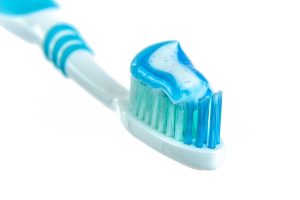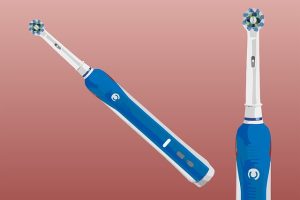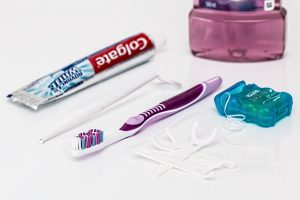Good dental hygiene is more than just a pathway to a bright smile; it’s a critical component of overall health and well-being.
The mouth is a gateway to the body, making oral care essential not only for maintaining healthy teeth and gums but also for preventing various health issues.
Poor oral hygiene has been linked to several serious health conditions, including heart disease, diabetes, and respiratory infections. Therefore, regular and effective teeth cleaning is vital.
Read Also; How to Fix Crooked Teeth Without Braces at Home
In the bustling rhythm of modern life, finding time for regular dental checkups can be challenging, emphasizing the importance of a solid at-home oral care routine.
Fortunately, the advancement in dental care tools and products has made it easier than ever to maintain optimal oral health from the comfort of your home.
This invaluable piece is designed to introduce you to a variety of teeth cleaning tools available for home use.
From the classic manual toothbrushes to innovative electric toothbrushes, water flossers, and beyond, we’ll explore the features and benefits of each tool.
Whether you have sensitive teeth, are looking for gum health solutions, or simply want to maintain a dazzling smile, there’s a tool tailored to every need.
See Also; 18 Most Popular Dentists in Kentucky
Best teeth cleaning tools for home use
- Manual Toothbrushes
- Electric Toothbrushes
- Water Flossers
- Dental Floss
- Tongue Scrapers
- Mouthwash
- Toothpaste Options
- Home Teeth Whitening Kits
Manual Toothbrushes
Manual toothbrushes have been the cornerstone of oral hygiene for centuries. Despite the advent of modern alternatives, they remain a popular choice due to their simplicity, affordability, and effectiveness.

How Manual Toothbrushes Work
The principle behind a manual toothbrush is straightforward. It involves physically moving the brush over all surfaces of your teeth and gums to remove plaque, a sticky film of bacteria that forms on teeth.
If not removed, plaque can lead to tooth decay and gum disease.
The Advantages of Manual Toothbrushes
- Affordability
- Accessibility
- Control
- Simplicity and Reliability
The Disadvantages
- Technique Dependent
- Physical Effort
- Lack of Timers
Choosing the Right Manual Toothbrush
- Bristle Hardness: Soft bristles are usually recommended by dentists as they are less likely to damage the gums and tooth enamel.
- Head Size: A smaller head is preferable as it can reach more areas of the mouth, including hard-to-reach back teeth.
- Handle Design: Ergonomic handles can provide better grip and comfort, particularly for those with dexterity issues.
Tips for Effective Use
- Brushing Technique: Use gentle, circular motions to clean the teeth and gum line. Avoid aggressive or horizontal scrubbing, which can harm gums and enamel.
- Brushing Time: Brush for at least two minutes, twice a day. Consider using a timer to ensure adequate brushing time.
- Replacement: Replace your toothbrush every three to four months, or sooner if the bristles become frayed.
Electric Toothbrushes
Electric toothbrushes have gained immense popularity in recent years as a powerful alternative to manual brushing.
They are designed to make the brushing process more efficient and less reliant on proper technique.

How Electric Toothbrushes Work
These toothbrushes use battery power to move the brush head in specific patterns. This movement can be oscillating, rotating, vibrating (sonic), or a combination.
The motion of the brush head is designed to remove plaque more effectively than manual brushing by providing consistent power and speed.
Advantages of Electric Toothbrushes
- Efficiency: Studies have shown that electric toothbrushes can remove more plaque and reduce gingivitis more effectively than manual toothbrushes.
- Ease of Use: They are particularly beneficial for people with limited mobility, such as those with arthritis.
- Built-in Timers: Most electric toothbrushes have a timer that helps ensure you brush for the full recommended two minutes.
- Pressure Sensors: Some models come with pressure sensors that alert you if you’re brushing too hard, helping to protect your gums and enamel.
- Fun for Kids: They can make brushing more appealing to children, with various fun designs and features.
Disadvantages
- Cost: Electric toothbrushes are more expensive than manual ones, and they require battery replacements or recharging.
- Maintenance: The brush heads need to be replaced regularly, just like a manual toothbrush.
- Portability: Some models can be bulky or inconvenient for travel.
Selecting the Best Electric Toothbrush
- Type of Brushing Action: Decide whether you want a brush that oscillates, rotates, vibrates, or a combination of these.
- Battery Life: Consider how often the toothbrush needs to be recharged.
- Extra Features: Some brushes come with additional features such as Bluetooth connectivity, multiple brushing modes for sensitive teeth or gum care, and more.
Tips for Effective Use
- Let the Brush Do the Work: Apply gentle pressure and move the brush slowly across the teeth, allowing the brush to do the cleaning.
- Cover All Areas: Spend equal time on all sections of your mouth to ensure a thorough clean.
- Regular Head Replacement: Replace the brush head every three months or sooner if the bristles become frayed.
Water Flossers
In the realm of dental hygiene, water flossers, also known as oral irrigators, have emerged as a revolutionary tool.
They provide an alternative to traditional string floss, offering a unique and effective way to clean between teeth and below the gumline.
How Water Flossers Work
A water flosser is a handheld device that shoots a stream of water at a controlled pressure.
This stream of water removes food particles, plaque, and bacteria from between teeth and from the gum pockets, areas where a toothbrush can’t always reach effectively.
Advantages of Water Flossers
- Effective for Braces and Dental Work: Exceptionally beneficial for people with braces, dental implants, crowns, or bridges where traditional flossing can be challenging.
- Gentle on Gums: The water stream is gentle on the gums and can reduce bleeding and inflammation, making it a great option for those with sensitive gums or gum disease.
- Easy to Use: Especially helpful for people with dexterity issues or those who find string flossing difficult.
- Deep Cleaning: Can reach deeper into the gum pockets compared to traditional floss, offering a more thorough cleaning.
Disadvantages
- Cost: More expensive than traditional dental floss.
- Size and Portability: Generally bulkier and not as travel-friendly as dental floss.
- Requires Electricity or Batteries: Needs to be charged or plugged in, or requires batteries.
Choosing the Right Water Flosser
- Pressure Settings: Look for a model with adjustable pressure settings to suit your comfort level and cleaning needs.
- Portability: If you travel often, consider a cordless model.
- Tips and Attachments: Some models come with various tips for different needs, such as plaque removal, orthodontic care, or periodontal pockets.
Tips for Effective Use
- Start with Lower Pressure: Begin with the lowest setting and increase the pressure as you become accustomed to the sensation.
- Use Warm Water: For sensitive teeth or gums, using warm water can be more comfortable.
- Proper Technique: Lean over the sink, place the tip in your mouth, close your lips slightly to prevent splashing, and let the water flow from your mouth into the sink.
- Thorough Coverage: Move the flosser tip along the gumline and between teeth, pausing briefly between teeth to allow the water to flush out any debris.
Dental Floss
Dental floss is a classic and indispensable tool in oral hygiene, designed to remove plaque and food particles from between teeth and along the gum line.
This is crucial because these are areas a toothbrush cannot always effectively reach.
How Dental Floss Works
Dental floss is a thin, soft thread. When gently moved up and down between the teeth and under the gumline, it dislodges food particles and plaque, thus preventing the buildup that leads to tartar, cavities, and gum disease.
Advantages of Dental Floss
- Precision: Offers direct contact with the sides of the teeth and the ability to control the pressure and angle.
- Versatility: Can be used with braces, bridges, and other dental work.
- Affordability and Accessibility: Widely available and inexpensive.
- Portability: Easy to carry in a purse or pocket for use anywhere.
Disadvantages
- Technique-Sensitive: Requires a certain level of dexterity and skill to use effectively.
- Potential for Gum Damage: Incorrect usage can damage gums or cause bleeding.
- Not Always Comfortable: Some people find flossing uncomfortable, particularly if they have sensitive gums or tight spaces between teeth.
Types of Dental Floss
- Waxed and Unwaxed: Waxed floss slides between teeth more easily, while unwaxed floss can provide a squeaky-clean feel.
- Dental Tape: Flatter and broader than standard floss, ideal for those with wider spaces between teeth.
- Flavored Floss: Available in various flavors to make the experience more pleasant.
- Eco-Friendly Options: Flosses made from biodegradable materials for environmentally conscious consumers.
Choosing the Right Dental Floss
- Comfort and Ease of Use: Select a floss type that feels comfortable and is easy to handle.
- Individual Needs: Consider specific needs like sensitive gums, braces, or wide gaps between teeth.
- Flavor and Texture: Personal preference in flavor and texture can encourage regular flossing.
Tips for Effective Flossing
- Proper Technique: Use about 18 inches of floss, winding most of it around one of your middle fingers and a small amount around the opposite finger. Gently slide the floss between teeth using a back-and-forth motion.
- Be Gentle: Curve the floss around the base of each tooth and under the gumline, but avoid snapping or forcing the floss as this can damage gums.
- Regular Use: Floss at least once a day, ideally before bedtime, to remove plaque and food particles that have accumulated throughout the day.
Tongue Scrapers
While brushing and flossing are critical for dental health, cleaning the tongue is often an overlooked aspect of oral hygiene.
The tongue can harbor bacteria and food particles, leading to bad breath and potentially contributing to dental problems. This is where tongue scrapers come into play.
How Tongue Scrapers Work
A tongue scraper is a tool designed to clean the coating off the surface of the tongue. It works by gently pulling the scraper across the tongue’s surface, removing unwanted buildup that a toothbrush might not effectively reach.
Advantages of Tongue Scrapers
- Reduces Bad Breath: Regular use can significantly reduce halitosis, commonly caused by bacteria on the tongue.
- Improves Overall Oral Health: Helps in removing bacteria that can contribute to tooth decay and gum disease.
- Enhances Taste: Cleaning the tongue can improve taste bud sensitivity and overall enjoyment of food.
- Simple and Quick to Use: Tongue scraping is a fast and easy addition to an oral hygiene routine.
Disadvantages
- Gag Reflex: Some people may find it triggers their gag reflex, though this often lessens with regular use.
- Additional Tool: Requires the addition of another instrument to the daily oral hygiene regimen.
Types of Tongue Scrapers
- Plastic Scrapers: Affordable and widely available. They are soft and flexible, suitable for beginners.
- Metal Scrapers: Often made from stainless steel or copper, these are more durable and can be more effective in removing buildup.
- Brush-Scraper Combos: Some toothbrushes come with a scraper edge on the back of the head, offering convenience.
Choosing the Right Tongue Scraper
- Material: Consider whether you prefer the softness of plastic or the durability and effectiveness of metal.
- Comfort and Size: Choose a size and shape that feels comfortable in your mouth and is easy to maneuver.
- Hygiene and Maintenance: Look for options that are easy to clean and store.
Tips for Effective Use
- Gentle Technique: Place the scraper at the back of the tongue and gently pull it forward, rinsing the scraper after each swipe.
- Consistency: Incorporate tongue scraping into your daily routine, ideally each morning.
- Avoid Overuse: Be gentle and avoid excessive scraping, which can irritate the tongue.
Mouthwash
Mouthwash, also known as oral rinse, plays a versatile role in dental hygiene. While it’s not a substitute for brushing or flossing, it can be an excellent adjunct to these practices, offering various benefits ranging from freshening breath to preventing dental issues.
How Mouthwash Works
Mouthwash is a liquid product designed to be swished around the mouth to help clean the oral cavity, reduce bacteria, freshen breath, and, depending on the type, can even provide specific dental health benefits.
Advantages of Mouthwash
- Freshens Breath: Helps combat bad breath, leaving the mouth feeling fresh and clean.
- Reduces Bacteria: Many mouthwashes contain antiseptic ingredients that help kill bacteria that can lead to plaque buildup, gum disease, and tooth decay.
- Prevents Dental Issues: Some formulations contain fluoride, which can help prevent cavities and strengthen tooth enamel.
- Supports Gum Health: Can help reduce the risk of gingivitis and gum disease.
Disadvantages
- Not a Replacement: Should not be used as a substitute for brushing and flossing.
- Possible Alcohol Content: Some mouthwashes contain alcohol, which can cause a burning sensation and might not be suitable for everyone.
- Can Mask Underlying Problems: Overuse might mask the symptoms of dental problems like bad breath due to decay or gum disease.
Types of Mouthwash
- Cosmetic Mouthwashes: Primarily aimed at freshening breath and provide a pleasant taste.
- Therapeutic Mouthwashes: Contain active ingredients aimed at reducing plaque, gingivitis, cavities, and/or tooth sensitivity.
- Fluoride Rinses: Specifically formulated to reduce tooth decay and strengthen enamel.
- Natural/Organic Options: Free from synthetic chemicals and often alcohol-free, suitable for those who prefer natural oral care products.
Choosing the Right Mouthwash
- Dental Needs: Choose a mouthwash based on specific needs, such as cavity prevention, gum health, or sensitivity.
- Alcohol Content: If you have a dry mouth or are sensitive to alcohol, opt for an alcohol-free mouthwash.
- Flavor: Select a flavor that you enjoy, as this will encourage regular use.
Tips for Effective Use
- Follow Instructions: Use mouthwash as directed on the label. Typically, this involves swishing a specified amount around the mouth for about 30 seconds.
- Avoid Rinsing Afterward: To allow the active ingredients to work effectively, avoid rinsing your mouth with water immediately after using mouthwash.
- Timing: Consider using mouthwash at a different time from brushing, such as after meals, to extend the benefits of oral hygiene throughout the day.

Toothpaste Options
Toothpaste is an essential component of daily oral hygiene. It not only helps in cleaning the teeth but also offers various other benefits depending on its formulation.
Understanding the different types of toothpaste and their specific purposes can significantly enhance your oral care routine.
How Toothpaste Works
Toothpaste typically contains abrasive agents, flavorings, and active ingredients that help in cleaning teeth, removing plaque, and fighting cavities.
When used with a toothbrush, it aids in the mechanical removal of plaque and food debris while delivering substances that can strengthen and protect the teeth.
Benefits of Using Toothpaste
- Cavity Prevention: Most toothpaste contains fluoride, which strengthens tooth enamel and helps prevent cavities.
- Plaque and Tartar Control: Helps reduce plaque buildup and can slow the formation of tartar.
- Whitening: Certain toothpaste formulations are designed to remove surface stains and whiten teeth.
- Sensitivity Reduction: Some toothpaste types are formulated to help lessen tooth sensitivity to hot and cold.
- Gum Health: There are toothpaste options that include ingredients to improve gum health and prevent gingivitis.
Types of Toothpaste
- Fluoride Toothpaste: The most common type, recommended for its ability to fight cavities and strengthen enamel.
- Whitening Toothpaste: Contains mild abrasives or chemical agents that help remove surface stains on teeth.
- Sensitive Teeth Toothpaste: Formulated with specific compounds like potassium nitrate or strontium chloride to reduce tooth sensitivity.
- Natural/Organic Toothpaste: Free from synthetic ingredients, often fluoride-free, and may use natural abrasives and flavorings.
- Tartar Control Toothpaste: Designed to prevent tartar buildup, which can lead to gum disease.
- Children’s Toothpaste: Typically contains less fluoride, is gentler, and comes in flavors appealing to children.
Choosing the Right Toothpaste
- Dental Needs and Preferences: Consider what you need most – cavity prevention, tartar control, whitening, or sensitivity relief.
- Fluoride Content: Most dentists recommend using fluoride toothpaste for its cavity-fighting properties.
- ADA Approval: Look for toothpaste that has been approved by the American Dental Association (ADA) or equivalent organizations in other countries.
- Flavor and Texture: Choose a flavor and texture that you enjoy, as this will encourage regular brushing.
Tips for Effective Use
- Correct Amount: Use only a pea-sized amount of toothpaste for each brushing session.
- Brushing Technique: Brush gently in a circular motion, ensuring you reach all surfaces of your teeth.
- Avoid Rinsing Immediately: After brushing, spit out the toothpaste but avoid rinsing right away to allow the fluoride to remain on the teeth longer.
Home Teeth Whitening Kits
Home teeth whitening kits have surged in popularity as a convenient and cost-effective way to achieve a brighter smile.
These kits are designed to be used outside of the dental office, offering a degree of flexibility and privacy for users looking to enhance the aesthetics of their teeth.
How Home Teeth Whitening Kits Work
These kits usually contain bleaching agents, most commonly hydrogen peroxide or carbamide peroxide, which work to remove surface stains and lighten the color of the teeth.
The kits come in various forms, including strips, gels, trays, and even LED light-based systems.
Advantages of Home Teeth Whitening Kits
- Convenience: Can be used in the comfort of your home and at a time that suits you.
- Cost-Effective: Generally more affordable than professional whitening treatments offered by dentists.
- Ease of Use: Many kits are user-friendly and come with clear instructions.
- Effective Results: Most users see noticeable whitening results after consistent use.
Disadvantages
- Potential for Gum Irritation and Tooth Sensitivity: The bleaching agents can cause sensitivity or irritation if not used correctly.
- Uneven Whitening: There is a risk of uneven whitening, especially if the whitening agent isn’t applied evenly.
- Temporary Results: The whitening effect is not permanent, and stains may reappear over time.
- Not Suitable for Everyone: May not be effective for certain types of discoloration, such as stains caused by medications or tooth injury.
Types of Home Whitening Kits
- Whitening Strips: Thin, flexible strips coated with a whitening gel that you apply to the teeth.
- Whitening Gels and Trays: Gels are applied to the teeth using a small brush or placed in a tray that fits over your teeth.
- LED Whitening Kits: Use light to accelerate the whitening process, often combined with a gel.
Choosing the Right Kit
- Ingredients: Look for kits with safe levels of bleaching agents.
- Comfort and Fit: Ensure that trays or strips fit well to avoid uneven whitening and gum irritation.
- Reputation and Reviews: Research and read reviews to choose a product with a good track record.
Tips for Safe and Effective Use
- Follow Instructions Carefully: Overuse or incorrect use can lead to gum irritation and tooth sensitivity.
- Monitor for Sensitivity: If you experience significant sensitivity or discomfort, discontinue use and consult a dentist.
- Maintain Good Oral Hygiene: Whitening works best on clean, plaque-free teeth.
- Lifestyle Adjustments: To maintain results, limit foods and drinks that stain teeth, such as coffee, tea, and red wine.
Conclusion on the best teeth cleaning tools for home use
Good dental health is not just about aesthetics and having a bright smile; it’s integral to your overall health and well-being.
Each tool discussed in above plays a vital role in maintaining a healthy mouth, preventing dental diseases, and ensuring your smile remains bright and beautiful.
Good dental health is a journey, not a destination. It requires ongoing commitment and care.
By understanding and utilizing the various teeth cleaning tools available for home use, you can take significant strides in protecting your oral health, ensuring that your smile remains a source of confidence and joy for years to come.
FAQs on the best Teeth Cleaning Tools for Home Use
- How often should I replace my toothbrush or electric toothbrush head?
Dentists generally recommend replacing your toothbrush or electric toothbrush head every three to four months. If the bristles become frayed or worn out before this time, you should replace it sooner, as worn-out bristles are less effective at cleaning teeth.
- Are electric toothbrushes better than manual toothbrushes?
Electric toothbrushes can be more effective at removing plaque and reducing gingivitis compared to manual toothbrushes, especially for individuals who may not have a proper brushing technique.
- Can water flossers replace traditional dental floss?
Water flossers are an effective alternative to traditional dental floss, particularly for individuals with braces, dental implants, or those who find string flossing challenging.
- How do I choose the right type of toothpaste for my needs?
The choice of toothpaste depends on your specific dental needs. For general use, a fluoride toothpaste is recommended to prevent cavities.
If you have sensitive teeth, consider a toothpaste formulated for sensitivity. For additional concerns like whitening or tartar control, look for toothpaste that specifically addresses these issues.
- Is mouthwash necessary in an oral hygiene routine?
While mouthwash is not a substitute for brushing and flossing, it can be a beneficial addition to your oral hygiene routine. Therapeutic mouthwashes can help reduce plaque, prevent or reduce gingivitis, reduce the speed that tartar forms, or provide a combination of these benefits.
- How often should I use a teeth whitening kit at home?
Follow the manufacturer’s instructions on the frequency of use for home teeth whitening kits. Overuse can lead to tooth sensitivity and gum irritation. It’s also a good idea to consult with your dentist before starting any whitening regimen.
- Is it safe to use a tongue scraper every day?
Yes, it is generally safe to use a tongue scraper daily. It can help remove bacteria and food debris from the tongue, contributing to fresher breath and overall oral cleanliness. Be gentle and avoid aggressive scraping to prevent irritation.
- Can I use an electric toothbrush if I have sensitive gums?
Yes, many electric toothbrushes have settings for sensitive gums. Look for toothbrushes with soft bristles and adjustable intensity levels to ensure comfortable brushing.
- What should I do if I experience bleeding while flossing?
Some bleeding when you first start flossing is normal, especially if you haven’t been flossing regularly. However, if the bleeding persists, it’s important to visit a dentist as it could be a sign of gum disease.
- Are natural or organic oral care products as effective as traditional ones?
Natural or organic oral care products can be effective, but it’s important to choose products that are scientifically proven to be effective in oral hygiene.
Look for natural products with active ingredients that have been shown to support dental health.
Recommendations
Best Dental Insurance for Retired Military Families
3 Best Dental Sedation Courses For Dental Nurses
